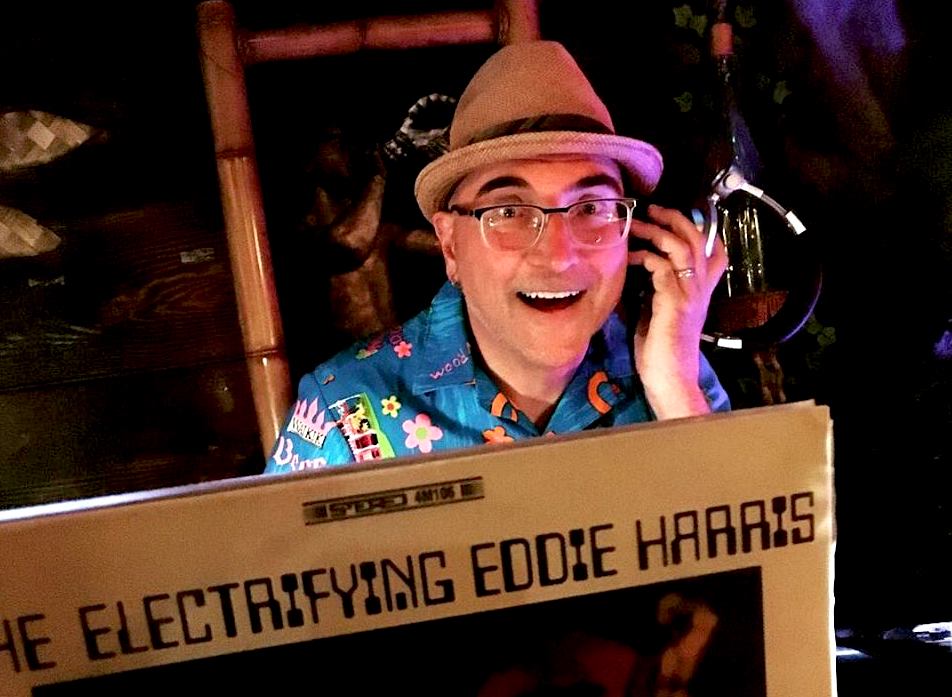
I feel that Otto von Stroheim may be one of the most important people in the tiki scene …
It’s 2018 and it seems like the tiki scene is bigger than ever! New tiki bars are opening up, mixologists are taking tiki drinks up to craft cocktail levels, there are many tiki artists creating and selling their work, new tiki mugs are being created that are pieces of art in and of themselves, and thousands of people attend tiki conventions like Tiki Oasis every year.
But things were a little bit more underground in the 90’s …
If you were into tiki back then, you were pretty much on your own. This was a time before the internet and before Sven Kirsten wrote The Book Of Tiki. The only source for information on tiki was Otto von Stroheim’s Tiki News. This publication brought people together with knowledge and information about tiki, and eventually Otto would bring everyone together socially to celebrate the tiki lifestyle with Tiki Oasis!
Here is Otto’s story …
What brought you into the ‘Tiki lifestyle’ and how long has it been a part of your life?
Otto- I gave a seminar on this a few years ago at The Hukilau (Thanks Christie White).
Being born and raised in the Los Angeles area suburbs I was surrounded by tropical landscaping, Googie coffee shops and theme parks like Busch Gardens, Marineland, Knott’s Berry Farm, Disneyland and Japanese Deer Park. Lava rock walls on bowling alleys and storefronts and themed apartment buildings were normal to me in my childhood so when I started to learn about Tiki Style I inherently understood it and knew that I already loved it. When I was living in Venice my roommate was a student at SCI-Arc and was studying and sharing with me the “Roadside Vernacular” and Las Vegas signage as architecture as discussed in books by Jim Heimann and Robert Venturi. We started throwing an annual backyard summer party that my roommate Ivan called “The Tiki Party.” We did that ten times between 1987 and 1995 and that basically led to Tiki Oasis in a few ways: I learned how to promote an event and publicize it; I met bands that later played club gigs or Tiki Oasis; and established a network of friends.
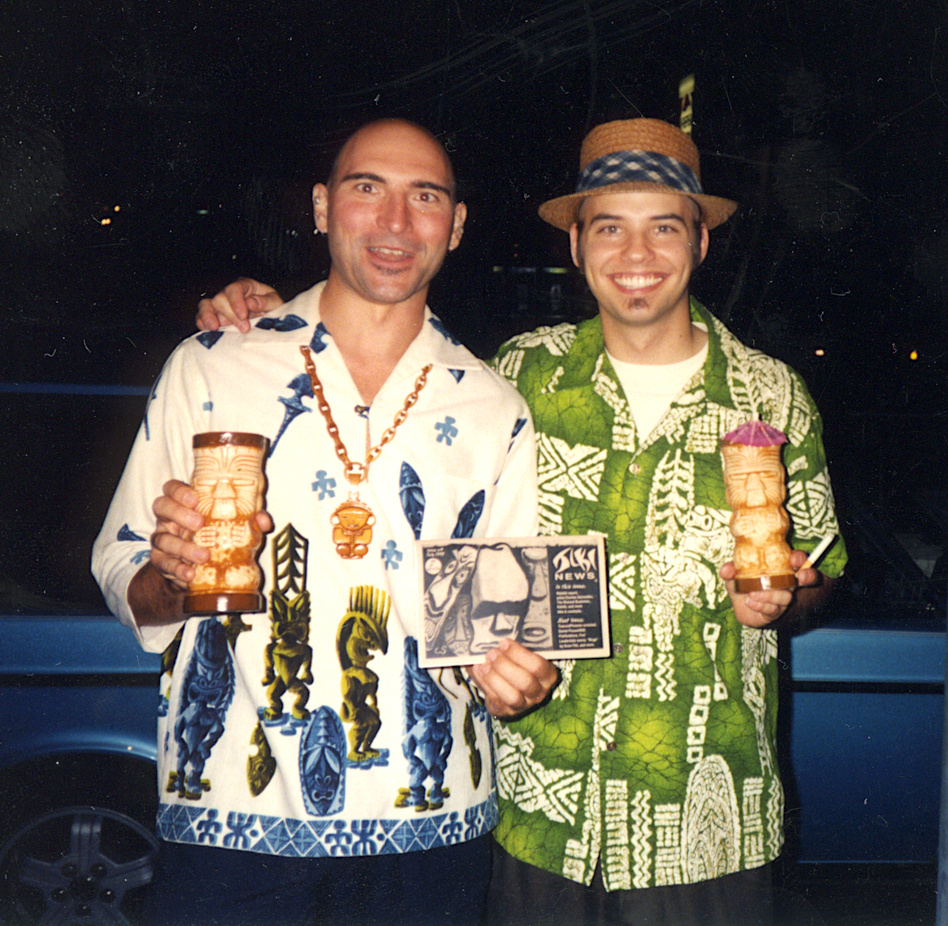
You created Tiki News, which was a tiki publication that started in the mid 90’s and lasted into the early 2000’s. Can you talk about how Tiki News came to be?
Otto- About halfway through The Tiki Party era it was clear that I had a Tiki mug collection and was learning about the history of Tiki bars and meeting others who were interested in that history. So, I started a newsletter to try to network Tiki collectors across the country. I planned the launch of Tiki News for Jan of 1995 and held a pre-kickoff party to announce it and plan for it. At the party were the handful of Tiki friends I had met through the backyard Tiki Party, folks like Barnard Yin, Domenic and Becky, Dug Miller, Josh Agle, Sven, Jeff Beachbum Berry, Stella from KXLU, and others. The first couple issues of Tiki News featured mugs for trade from Michael Lucas of The Phantom Surfers, and a feature story on the first new Tiki carver Bosko, cover art by Shag, and feature stories by Sven-Tiki (née Sven Kirsten). In the first few issues I did all the writing, except for Sven’s articles, took photos, and did the layout. I also did some spot illustrations for the back cover, editorials, and a regular column by David Smay called “Tiki Noir.” But I immediately solicited articles and art from friends and friends of friends. By issue #6 I had more art contributions than I could fit into the zine.
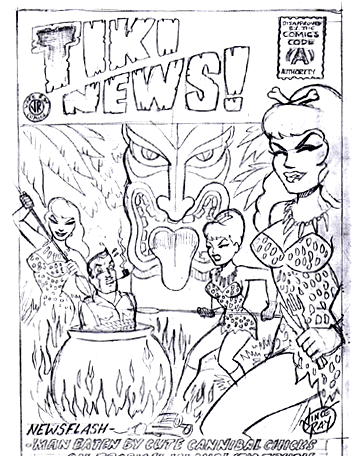
The first issue of Tiki News was run off my laser printer in my bedroom. I burned out the drum and it cost me over $100 to fix my laser printer so I ended up losing money on the print run. The zine was thin because it was designed to be able to be stapled and mailed with a 2-oz. rate stamp. Trivia: I hand stapled issues 8 – 14 because the photocopied issues were too thick to run through the auto-stapler and the cost of paying for the printer to hand staple them was too high. It took me several days to staple each issue. First, I would staple enough to mail out to subscribers. Then I’d staple the quantity needed to send to distributors and retail outlets, then I’d gradually finish the run a few hours per day. More trivia: early subscribers received an annual gift such as a magnet or sticker or hand pressed art postcard. I had to stop doing this after I got over 300 subscribers. When the zine folded in 2001 we had 900 subscribers.
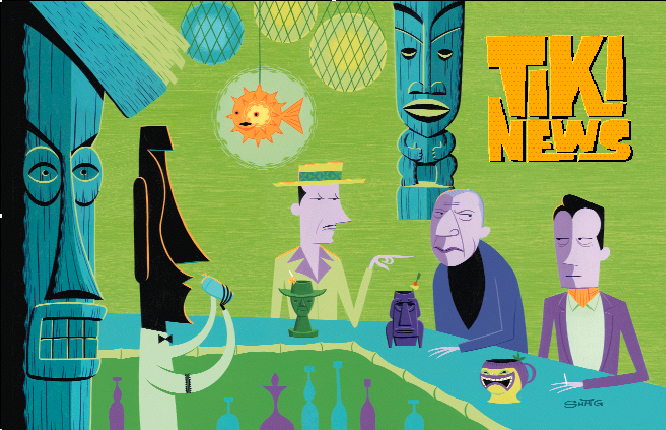
What was the Mid 90’s Tiki revival like?
Otto- In my catalog for one of the art exhibits I curated, “Tiki Art Two: The Second Coming of a New Art God,” artist/professor Jeffrey Vallance outlined the THREE waves of Tiki with One being the original Polynesian migrations, Two being the late 1970s and early 1980s underground appreciation, and Three being the mid 1990s revival wave which has not subsided.
I am honored to have met and befriended some of the players in the Second Wave. One of my dear friends, Bruce Licher of Savage Republic, was the conduit that connected me to Stuart Swezey, artists Steve Thomsen and Michael Uhlenkott, and eventually Jeffery. I later met Boyd Rice who is credited with introducing the music of Martin Denny to the Punk and Industrial Music scenesters of Los Angeles and beyond.
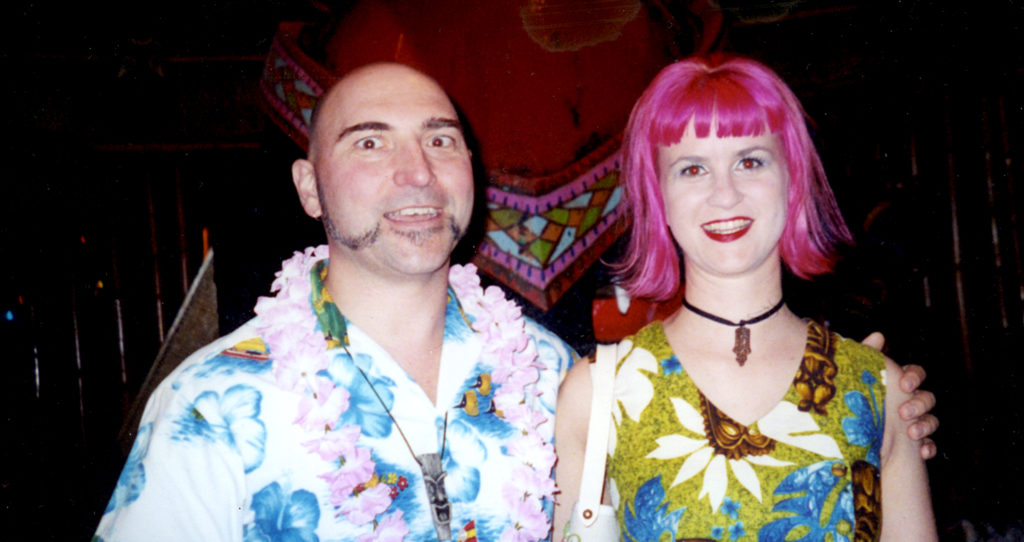
While this Second Wave of Tiki enthusiasts realized the Pop Culture significance of Tiki Style, they didn’t make a big effort to document it and share it in an academic way with a larger audience. Instead, because many Tiki bars were still around, the Second Wavers were able to appreciate Tiki first hand by making expeditions to local Tiki pantheons such as Kelbo’s, Sea & Jungle, or Jeffrey’s own backyard. The scant documentation from this era is Jeffrey’s art and a 7-inch single by The Tikis, a side project Surf band by Monitor, an Industrial Noise band featuring Uhlenkott and Thomsen, and the 1990 Rhino Records release of Martin Denny’s greatest hits curated by Stuart Swezey featuring illustrations by Vallance.
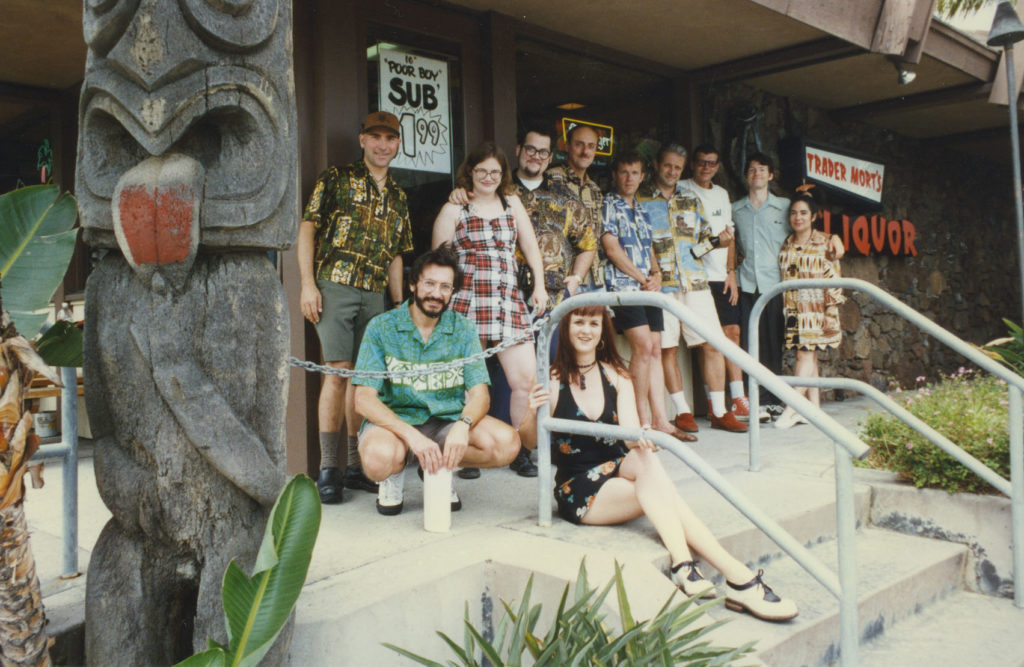
You live in Alameda CA. What is the tiki scene like in the Bay Area?
Otto- I moved to San Francisco in Sept of 1996 and I feel it was a great move for my Tiki career and for the Tiki movement in general. In 1995 the Tiki scene in America was focused solely in Los Angeles with me, Sven, and Beachbum Berry working with members of the LA Conservancy’s Mod Comm to gather and share knowledge. Bosko would often travel up to LA because there wasn’t a Tiki scene in San Diego where he lived. In 1995, I was part of a trio who hosted Exoticon, the first ever Lounge and Tiki music convention. It was one of Combustible Edison’s largest shows in the U.S. When I moved to SF I became the lightning rod for the Tiki scene there. I threw a sold-out group art show featuring art by Bosko, Shag, and Dawn Frasier. I DJed at every Lounge club in town. I threw a sold out show titled Bongos by the Bay headlined by Preston Epps and featuring the premiere of the band Ape, and Tiki News was embraced by the zine community in SF resulting in being featured in RESEARCH Books’ “zines vol. 2” and me being a featured speaker at APE – Alternative Press Expo.

When Tiki Central took off online it solidified the Tiki scene in SF as well as in other parts of the country and world. The Tiki fans that piloted Tiki Central launched a Tiki Bar crawl that helped the success of Bay Area bars like Forbidden Island in Alameda and Kona Club in Oakland. The Bay Area continues to support several new Tiki bars – Kon-Tiki, the new Zombie Village, Last Rites, and Bon Voyage. And of course, the iconic Tonga Room and Trader Vic’s continue to thrive here.
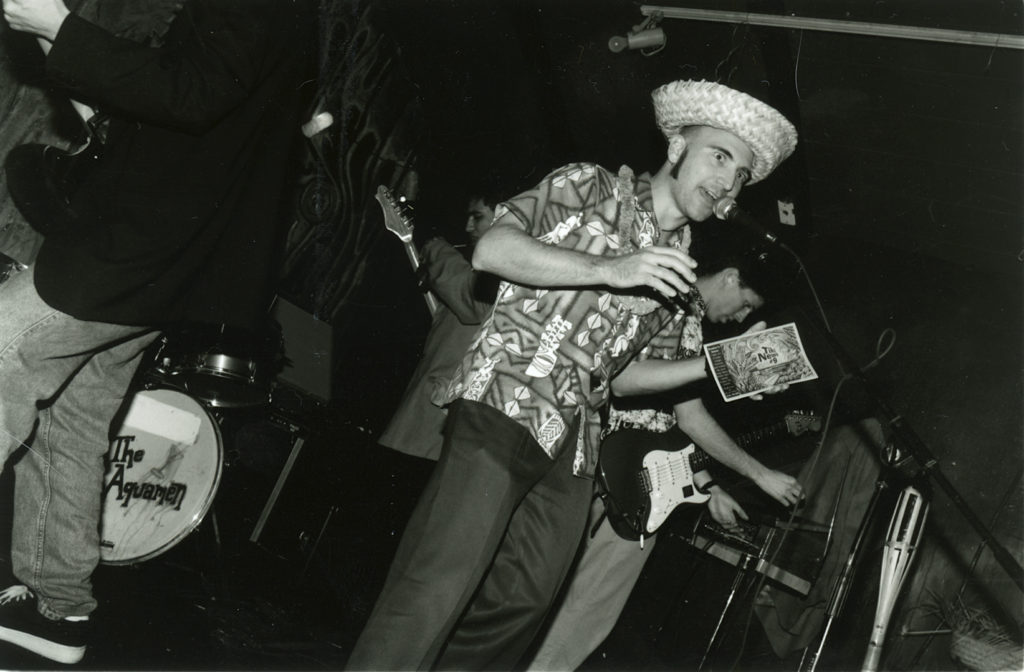
How did Tiki Oasis come together?
Tiki Oasis was started on the urging of Peter Moruzzi to save the tropics motel in Palm Springs. Me and Sven called all our friends, Sven designed the invite and Kevin Kidney showed an episode of Hawaiian Eye on 16mm film. The crowd doubled each year for the first four years and by year 6 we had to move it to the Hanalei Hotel in San Diego (now Crowne Plaza)
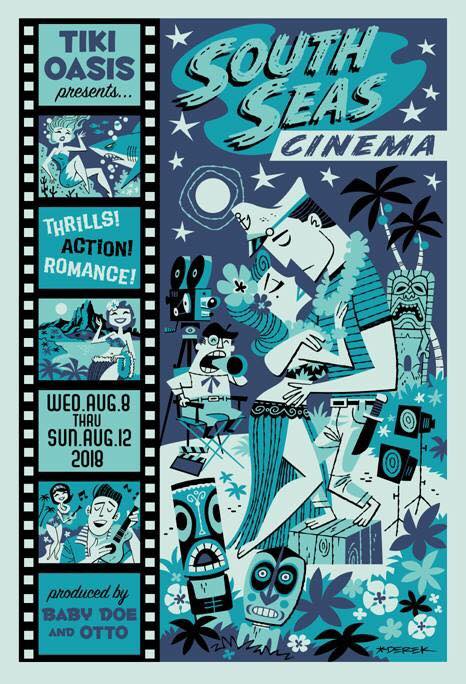
The first Arizona Tiki Oasis is happening next year. What are the details?
Otto- My wife Baby Doe and I conceived the Arizona Tiki Oasis as a supplement to, not a replacement of, Tiki Oasis (San Diego). The Arizona Tiki Oasis will feature the seminars of Tiki Oasis, tropical cocktails, vendors, room parties, and DJs as well as a few bands to provide the live music soundtrack.
At AZTO we will focus on community. Seminars, cocktail parties, and a poolside luau will give guests a more “Hawaii Resort” feel and a vacation with friends feel. During the day guests can lounge at the main pool or the garden pool or shop in the Marketplace in between educational or cocktail-focused seminars.
In the evening guests will enjoy a Supper Club style dinner, a rooftop sunset cocktail party, or late-night room parties on the verandas.
Hotel rooms and party passes go on sale in Mid-November 2018, and then a full schedule of seminars goes on sale in January 2019.
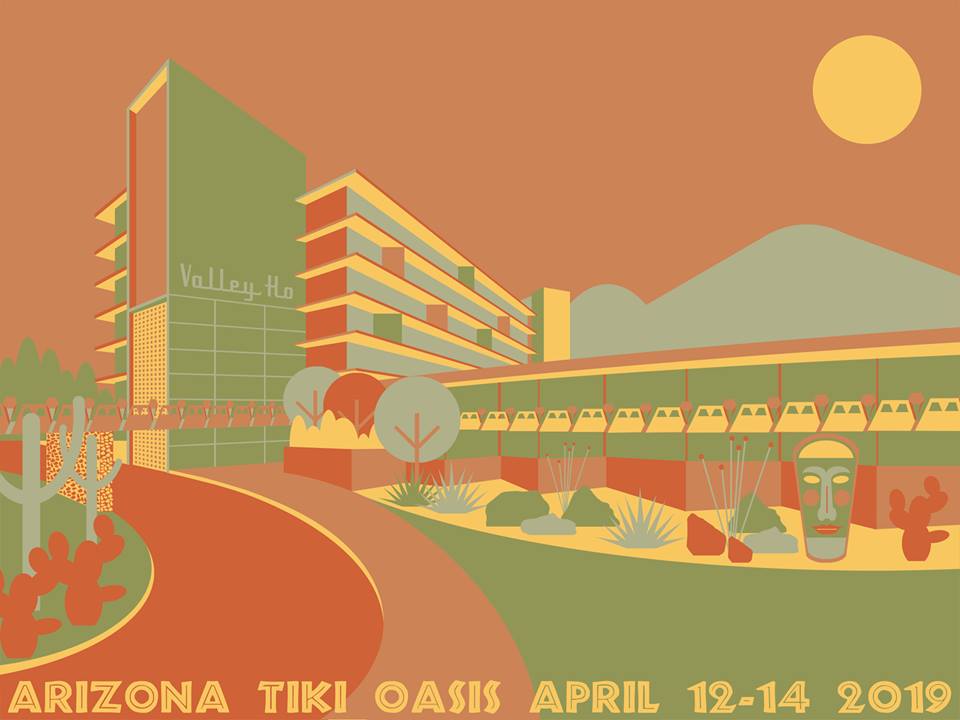
Here is the website for Tiki Oasis
Check out some the tiki action at Tiki Oasis on Tiki Oasis TV
Tiki Oasis is happening in Arizona! Here is the website for AZTO
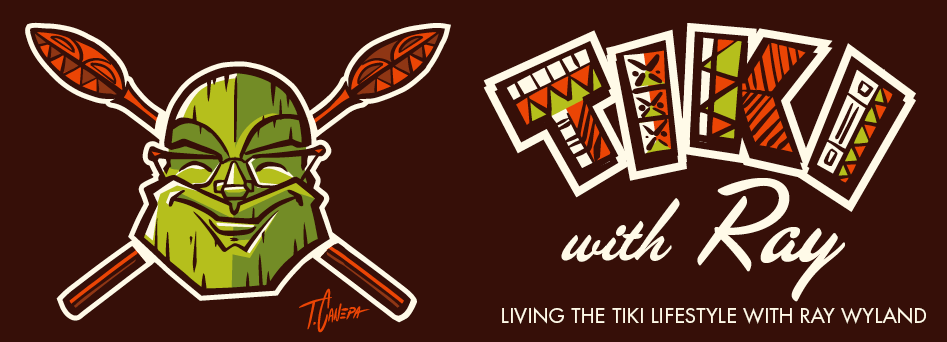
Thanks so much for the recognition of Otto’ contributions. If there is a single person responsible for creating ohana in our Tiki community it’s von Stroheim.
I completely agree! I’ve been wanting to do a post on Otto since I started my blog.